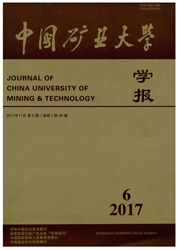

 中文摘要:
中文摘要:
讨论了利用重力场探测与气象实验卫星(GRACE)星间距离变率数据反演地球重力场模型的动力学法,推导了将两颗卫星加速度计的尺度和偏差以及初始相对速度作为待求参数与位系数一起求解的数学模型.基于67d GRACE星间距离变率和加速度计观测数据解算出80阶次的地球重力场模型TJGRACE02S.该模型与EIGEN—GL04C模型(前72阶)所表示的全球(2.5°×2.5°格网点)大地水准面差值的中误差和重力异常差值的中误差分别为0.052m和0.50×10^-5m/s^2结果表明:TJGRACE02S模型的精度要明显优于相同阶次的EIGEN—CHAMP03S和EGM96,而与EIGEN—GL04C和GGM01S模型的精度比较接近.
 英文摘要:
英文摘要:
The dynamical method for recovering the gravity field model based on the inter-satellite range-rate observations of GRACE(Gravity Recovery and Climate Experiment) was discussed, and the mathematical expressions were derived to solve the accelerometer scale and bias, the satellite's initial relative velocity vector and the model coefficients simultaneously. The gravity field model TJGRACE02S up to degree/order 80 has been recovered with the 67-day's GRACE observables including range-rate arid accelerometer data. The TJGRACE02S model(up to degree/order 72)are evaluated with the global (2. 5°× 2.5°grids) geoid height differences and gravity anomaly differences with respect to EIGEN-GL04C, the mean of geoid height differences are 0. 052 m, and the mean of gravity anomaly differences are 0.50 mGal. The validated results according to various methods indicate that the TJGRACE02S model is more accurate than the EIGEN-CHAMP03S and EGM96 model in the same degree/order, and has almost the same accuracy as EIGEN-GL04C and GGM01S model.
 同期刊论文项目
同期刊论文项目
 同项目期刊论文
同项目期刊论文
 期刊信息
期刊信息
